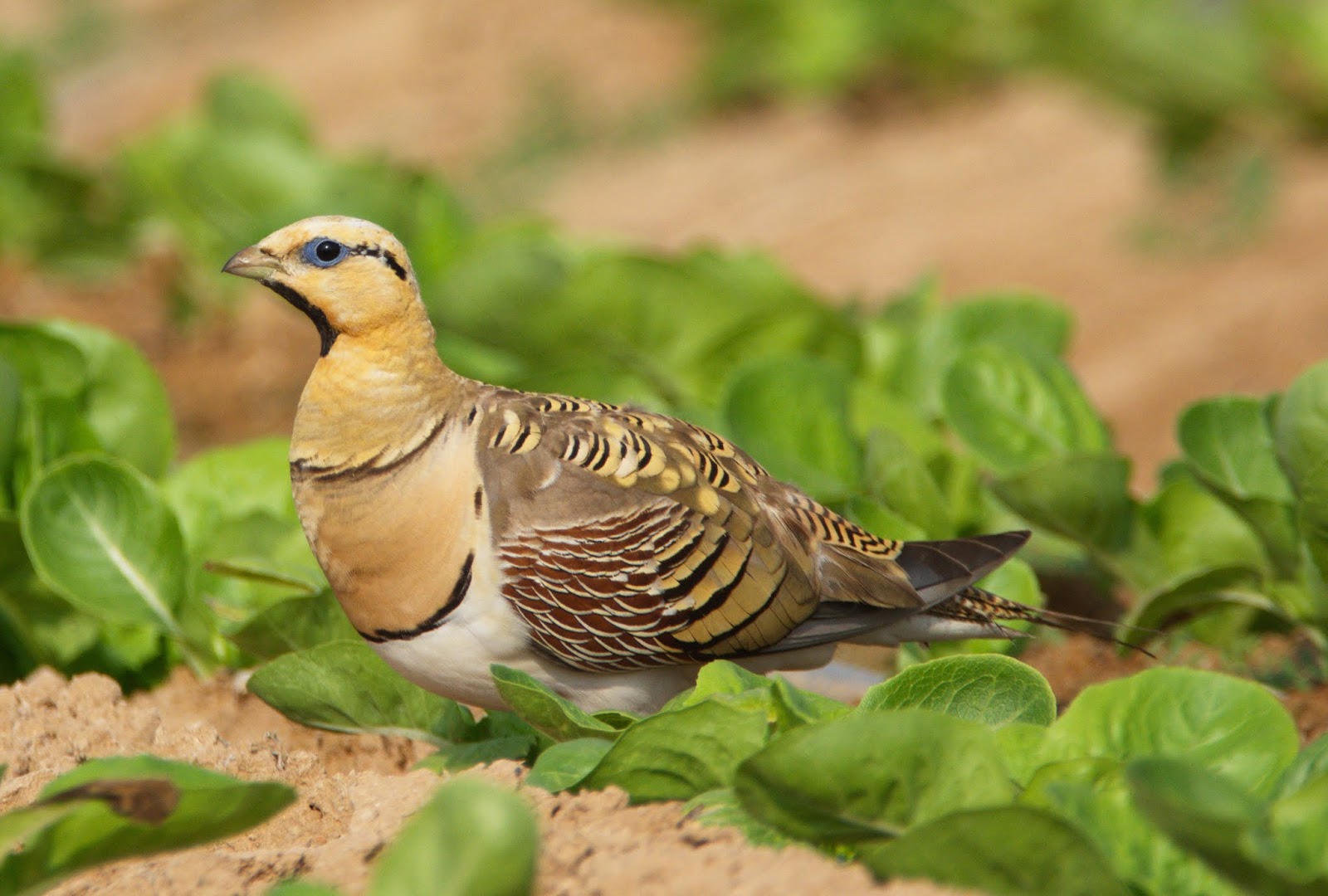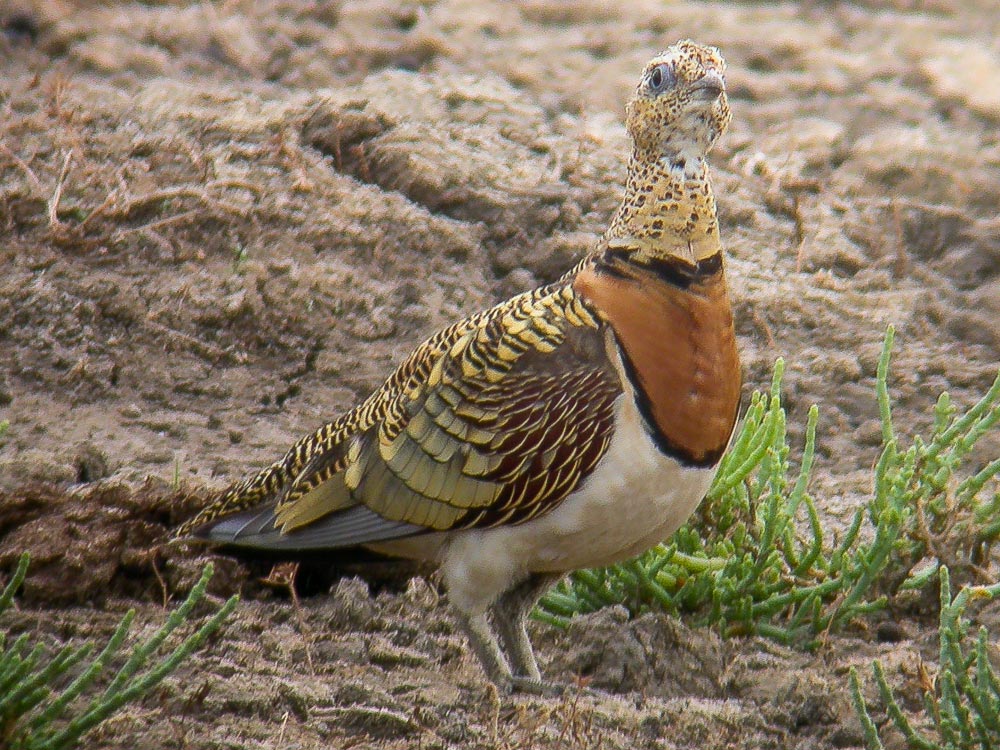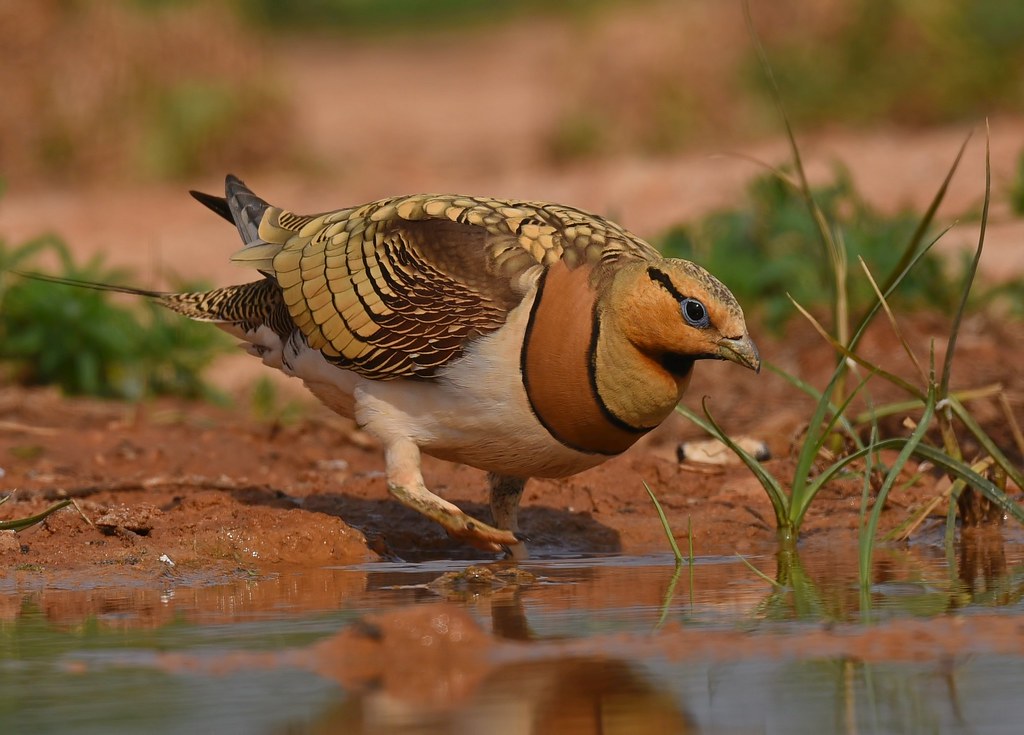The Pin-tailed Sandgrouse (Pterocles alchata) is a remarkable bird species known for its unique adaptations and striking appearance. Native to arid and semi-arid regions across southern Europe, North Africa, and parts of Asia, this bird is well-suited to life in some of the most challenging environments on Earth.
Pin-tailed Sandgrouse are medium-sized birds with a distinctive plumage that provides excellent camouflage against the sandy and rocky landscapes they inhabit. Males are particularly eye-catching, with intricate patterns of brown, yellow, and green on their feathers, along with a black band across the chest and a characteristic long, pointed tail that gives the species its name. Females, while less colorful, also exhibit finely patterned plumage, which helps them blend into their surroundings, especially when nesting.

One of the most fascinating aspects of Pin-tailed Sandgrouse behavior is their ability to survive in extreme environments with very little water. These birds have adapted to make long flights to reach water sources, often traveling at dawn or dusk to avoid the heat of the day. Once at the water, they soak their breast feathers to absorb water, which they then carry back to their chicks, a remarkable adaptation that helps ensure the survival of their young in harsh conditions.
Pin-tailed Sandgrouse feed primarily on seeds and small plants, which they forage for in open areas. Their diet and water-conserving behaviors are key to their survival in dry habitats, where resources can be scarce.

Despite their resilience, Pin-tailed Sandgrouse populations are vulnerable to habitat loss due to agricultural expansion and land use changes. Conservation efforts are important to protect the open, dry landscapes that these birds depend on.
With their stunning plumage, remarkable water-carrying behavior, and ability to thrive in some of the world’s toughest environments, the Pin-tailed Sandgrouse is a fascinating example of adaptation and survival in the avian world.






